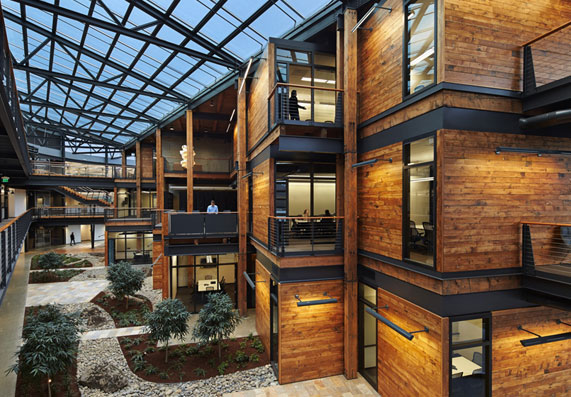Choosing Sustainable Materials: Building a Greener Future

Introduction: The Shift Towards Sustainable Building Materials
As environmental awareness grows, so does the demand for sustainable building materials. Choosing eco-friendly options not only benefits the planet but also contributes to healthier living spaces. In this article, we’ll explore the significance of sustainable building materials and the positive impact they can have on both construction practices and the environment.
Benefits of Sustainable Building Materials
The use of sustainable building materials offers a myriad of benefits. From reducing environmental impact to enhancing energy efficiency and indoor air quality, these materials contribute to creating more eco-conscious and resilient structures. Additionally, sustainable materials often have a longer lifespan, minimizing the need for frequent replacements and reducing overall construction waste.
Wood as a Renewable Resource
Wood, when sourced responsibly, is a prime example of a sustainable building material. As a renewable resource, wood can be harvested and replenished, making it an eco-friendly choice. Engineered wood products, such as laminated veneer lumber (LVL) and cross-laminated timber (CLT), further optimize the use of wood in construction while maintaining structural integrity.
Recycled and Reclaimed Materials
Incorporating recycled and reclaimed materials into construction projects is a key strategy for sustainability. Materials like recycled steel, reclaimed wood, and recycled glass not only divert waste from landfills but also reduce the demand for new raw materials. Utilizing these materials adds character to structures while promoting a circular economy.
Energy-Efficient Insulation and Windows
Improving the energy efficiency of buildings is a critical aspect of sustainable construction. Opting for insulation materials with high thermal resistance, such as recycled denim or cellulose insulation, helps regulate indoor temperatures and reduce the need for excessive heating or cooling. Energy-efficient windows, featuring double or triple glazing, further contribute to maintaining a comfortable and energy-efficient interior.
Bamboo: A Rapidly Renewable Option
Bamboo stands out as a rapidly renewable resource that offers various applications in construction. Known for its strength and versatility, bamboo matures quickly and can be harvested sustainably. From flooring to structural elements, bamboo provides an eco-friendly alternative to traditional construction materials.
Green Roofing and Cool Roofing Materials
Roofing materials play a crucial role in sustainable construction. Green roofing, with vegetation layers, offers natural insulation, reduces stormwater runoff, and provides aesthetic and ecological benefits. Cool roofing materials, designed to reflect sunlight and absorb less heat, contribute to energy efficiency by reducing the need for air conditioning in warmer climates.
Natural Stone with Low Environmental Impact
While natural stone is a traditional building material, selecting stone varieties with low environmental impact is crucial for sustainability. Locally sourced stone and alternatives like engineered stone, which combines crushed stone with resin, minimize transportation-related carbon emissions and resource extraction.
Adobe and Rammed Earth Construction
Traditional building methods, such as adobe and rammed earth construction, showcase sustainable practices that have stood the test of time. These techniques utilize natural materials abundantly available in many regions, reducing the need for energy-intensive manufacturing processes. Structures built with adobe or rammed earth also have excellent thermal mass properties, contributing to energy efficiency.
Hempcrete for Sustainable Construction
Hempcrete, made from the inner woody fibers of the hemp plant mixed with lime and water, is gaining popularity as a sustainable construction material. It is lightweight, insulating, and carbon-negative, as hemp absorbs more carbon dioxide during growth than is emitted during production. Hempcrete offers a renewable alternative for insulation and construction blocks.
Conclusion: Paving the Way for a Sustainable Future
In conclusion, the adoption of sustainable building materials is a pivotal step towards creating environmentally friendly and resilient structures. From responsibly sourced wood to recycled and reclaimed materials, energy-efficient options, and innovative alternatives like hempcrete, these choices shape the future of construction. By prioritizing sustainability, we not only contribute to healthier living environments but also leave a positive impact on the planet.
Explore more about Sustainable Building Materials at jetdesignhome.my.id.









